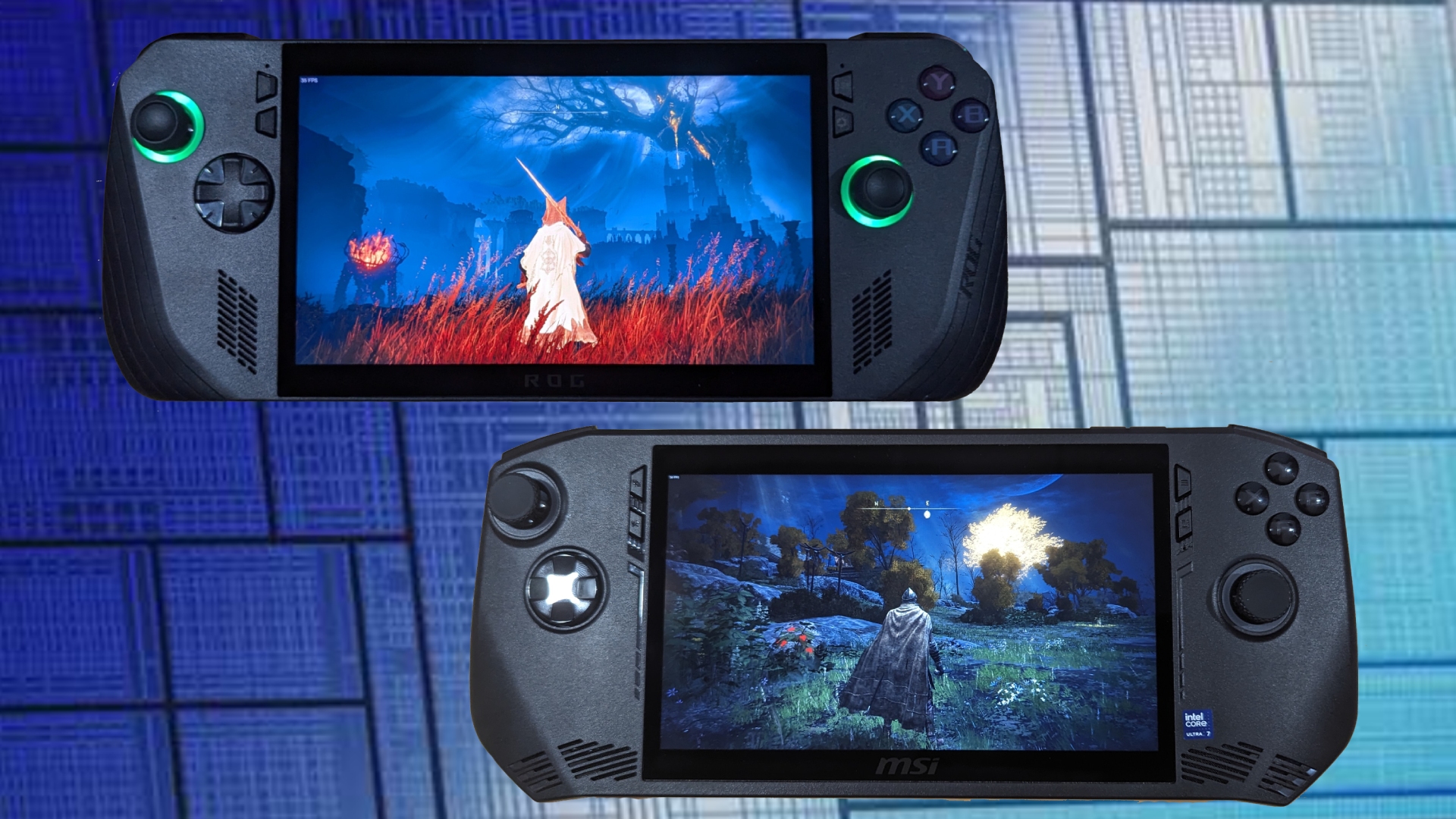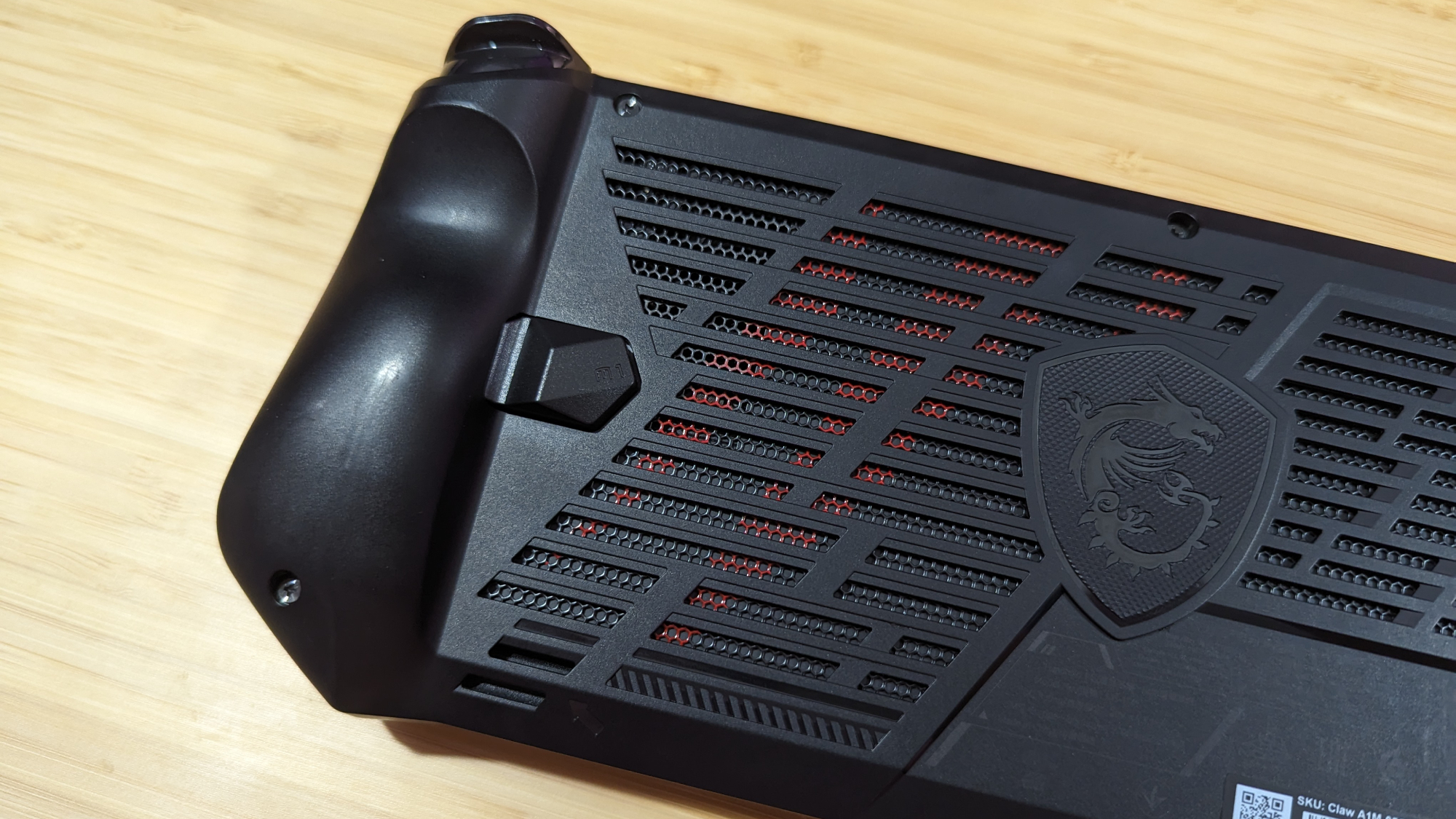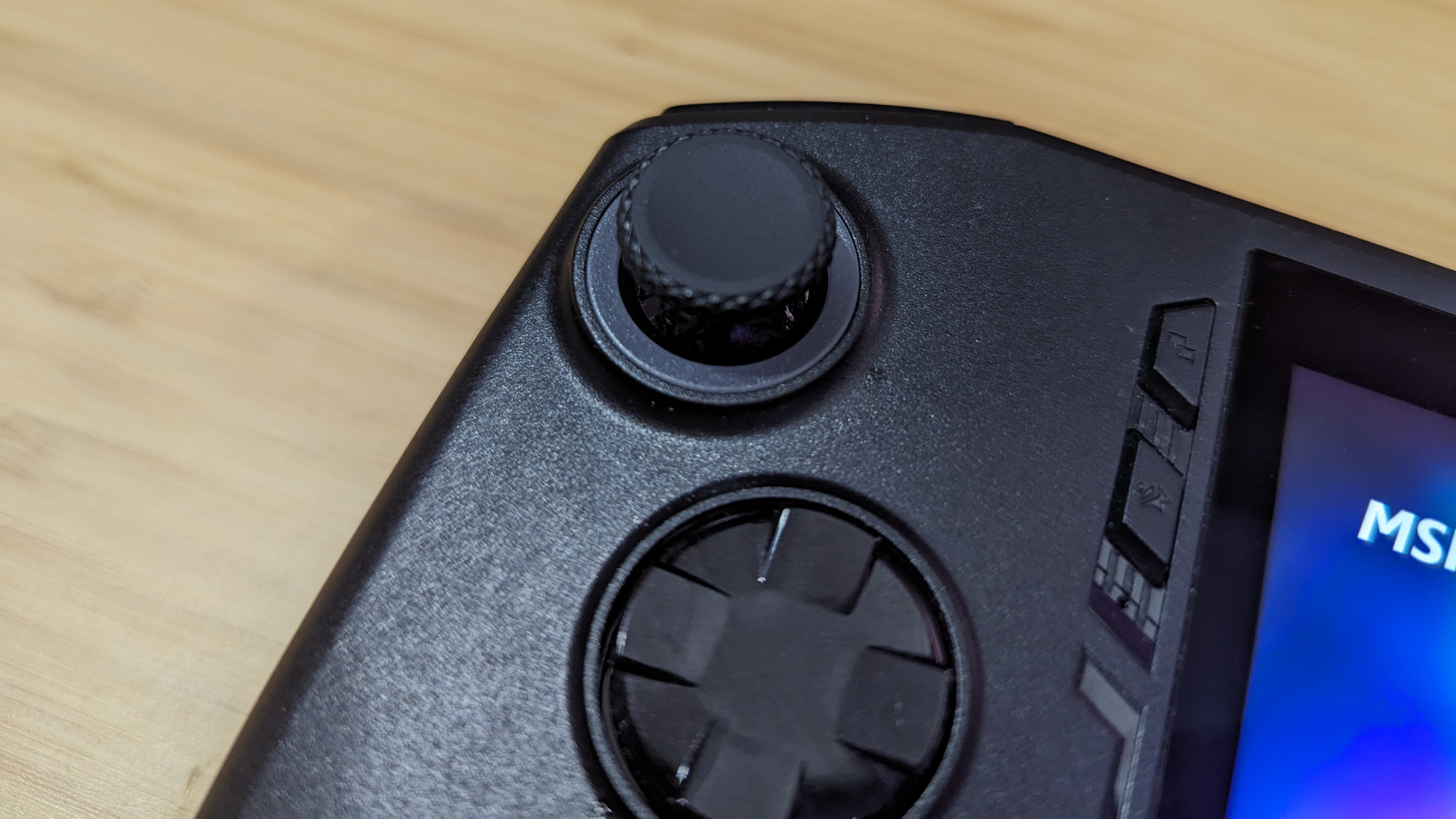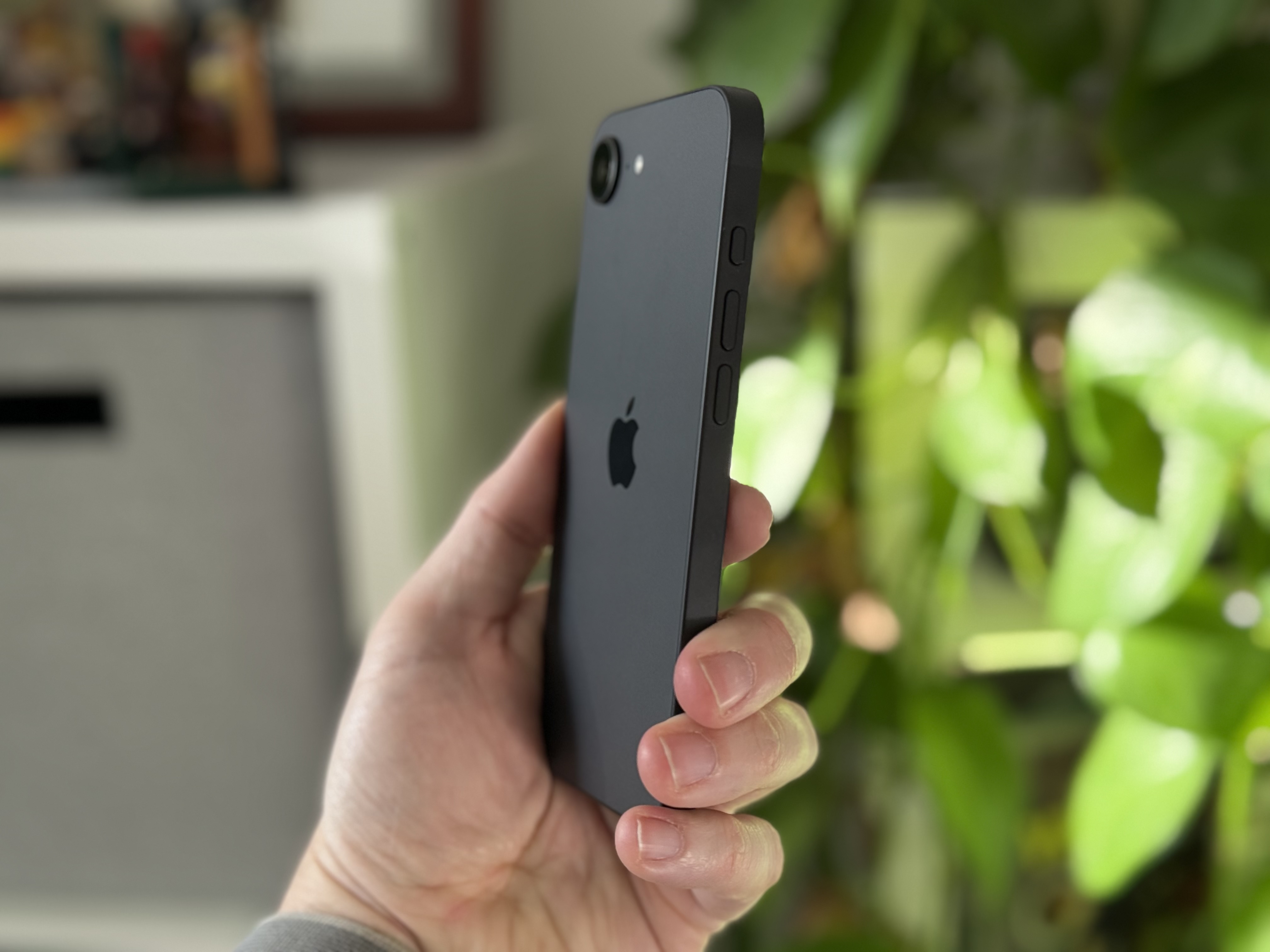Asus ROG Ally X vs MSI Claw 8 AI Plus: Can MSI finally pull ahead?
The MSI Claw 8 AI Plus isn't out yet — but does it stand a chance against the Asus ROG Ally X?

Windows gaming handheld consoles have taken the world by storm, and for lovers of gaming on the go, hardware companies have gone all in on this space to give us the best of the best.
But these devices recently reached a whole new peak with the Asus ROG Ally X, which I reviewed just last month. I gave it 4.5 out of 5 stars and called it a "fantastic mid-cycle refresh." I went as far as to say that it's the "best Windows gaming handheld available."
In contrast, I also reviewed the MSI Claw this year, and it sat at the exact opposite end of the spectrum. I gave it 2.5 out of 5 stars, and it was the worst Windows gaming handheld I had reviewed. Considering it launched months before the Ally X, it couldn't even compete against the original Ally.
However, MSI announced that it would launch the MSI Claw 8 AI Plus, and it could be prepared to give the Asus ROG Ally X a run for its money. While we don't have key details on the MSI Claw 8 AI Plus quite yet, we'll compare the two based on what we know thus far.
Asus ROG Ally X vs MSI Claw 8 AI Plus: Release date
The MSI Claw 8 AI Plus has no official release date, but it could launch in September alongside the latest Lunar Lake CPUs. If so, we'll be getting it in our hands rather soon. Considering the original MSI Claw launched this March, it would be best for the company to get the new model out as quickly as possible.
The longer it waits, the more similar it will be to the upcoming successor to the Asus ROG Ally, which will likely launch in the summer of 2025 (following the release patterns of the Ally and Ally X).
Alternatively, the MSI Claw 8 AI Plus may launch in March. It follows a yearly release cycle, but that will make it far harder for the device to find a competitive position among Windows gaming handhelds when the successor to the Asus ROG Ally is right around the corner.
Stay in the know with Laptop Mag
Get our in-depth reviews, helpful tips, great deals, and the biggest news stories delivered to your inbox.
Asus ROG Ally X vs MSI Claw 8 AI Plus: Design
I'm going to put it plainly: The MSI Claw is an ergonomic nightmare. Its curved bumpers do not fully extend through its entire surface, and they're far too squishy and don't offer a satisfying click. Alongside this, the back buttons are nudged far too close to the grips and are easy to press accidentally, while the engravings on the face buttons are too dark to actually see properly.

On the other hand, the Asus ROG Ally X is an ergonomic wonder. Its bumpers and triggers are satisfyingly springy; the joysticks boast a wonderful tension; the grips are even thicker and allow for greater ease of holding while gaming and the back buttons are further from the grips. Everything about it is just plain and simply better, so the MSI Claw 8 AI Plus has a lot of work to do in this department.
Digitaltrends got the opportunity to look at the device first-hand at Computex, and while we'll have to see how it feels in our hands to get a full sense of what changes it has made, MSI has apparently redesigned the chassis and triggers. Here's to hoping it feels better to hold!
Asus ROG Ally X vs MSI Claw 8 AI Plus: Performance
The competition wasn't even close when it came to the Asus ROG Ally's AMD Ryzen Z1 Extreme processor versus the MSI Claw's Intel Core Ultra 7 155H. AMD has always been far ahead of the game regarding integrated graphics, which was evident when we couldn't even run our traditional gaming tests on the Claw without it crashing.

However, the Asus ROG Ally X didn't upgrade its processor (although it did upgrade to 24GB of RAM), and we don't anticipate seeing improved performance until the actual Asus ROG Ally 2 comes out.
However, the MSI Claw 8 AI Plus will be upgrading to the next-generation Lunar Lake processors from Intel, meaning it will have improved performance to some extent. This might be a double-edged sword
So, what do we know about Lunar Lake integrated graphics? It's currently being dubbed Battlemage. It's a next-gen Xe2 GPU that features 1.5x faster performance than Meteor Lake's integrated graphics.
While taking Intel's claims at face value isn't entirely accurate, we are excited to see how Lunar Lake fares against AMD Ryzen Z1 Extreme. Perhaps MSI will truly pull ahead of Asus when it launches this successor.
Asus ROG Ally X vs MSI Claw 8 AI Plus: Display
We know that the MSI Claw 8 AI Plus is confirmed to feature an 8-inch, 1,920 x 1,080-pixel display at a 120Hz refresh rate. This isn't much different from the Asus ROG Ally X's 7-inch, 1,920 x 1,080-pixel panel at a 120Hz refresh rate, so it's just a matter of size.

However, the MSI Claw's original panel only covered 72.5 percent of the DCI-P3 color gamut, while the Asus ROG Ally X hit 80 percent. Things get especially bad when comparing brightness nits, as the Ally X managed 523 nits, while the MSI Claw was trapped at a far dimmer 429 nits.
Considering you'll be using this outdoors, the screen must be as bright as possible, and we're hoping the MSI Claw 8 AI Plus takes extra steps to improve the panel.
There's also the question of whether or not it'll be an OLED panel, which seems a tad unlikely, but we cannot help but dream. Whichever manufacturer is the first to bring OLED to a Windows gaming handheld will absolutely steal my heart, and although I'm not a big fan of the Claw, it could be a huge step in solidifying a victory against the competition.
Asus ROG Ally X vs MSI Claw 8 AI Plus: Battery life
The Asus ROG Ally X was the first Windows gaming handheld device to upgrade to an 80Wh battery, and as a result, its longevity was mindblowing. On the Laptop Mag battery life test, which involves continuous web surfing at 150 nits, it lasted 8 hours and 19 minutes before running out of juice.

This is pretty incredible for a gaming device. For context, the original Ally (40Wh) died after 5 hours and 51 minutes, while the MSI Claw (53Wh) died after 6 hours and 8 minutes.
It's already confirmed that the MSI Claw 8 AI Plus is upgrading to an 80Wh battery from its 53Wh battery, but longevity is more than just about size, as the efficiency of the processor plays a huge role in how long it will last. As the Lunar Lake processor is not yet in our hands, with them currently expected in September, we have no clue how efficient the MSI Claw 8 AI Plus will be with this new chip inside of it.
Pavan Davuluri, Corporate Vice President of Windows + Devices at Microsoft, claims on Intel's website that Lunar Lake will "bring meaningful fundamental improvements across security, battery life, and more."
We hope these rumors are true. Until we can test this for ourselves, there's not much else to say.

Self-described art critic and unabashedly pretentious, Claire finds joy in impassioned ramblings about her closeness to video games. She has a bachelor’s degree in Journalism & Media Studies from Brooklyn College and five years of experience in entertainment journalism. Claire is a stalwart defender of the importance found in subjectivity and spends most days overwhelmed with excitement for the past, present and future of gaming. When she isn't writing or playing Dark Souls, she can be found eating chicken fettuccine alfredo and watching anime.
